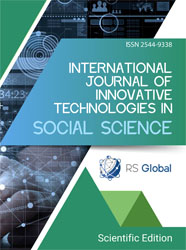EXPANSION OF JIJEL CITY AND THE PROBLEM OF URBAIN SPATIAL COHERENCE
Abstract
Through an assessment of the level of urban coherence in the city of Jijel, it was concluded that the city suffers from a lack of coherence in its urban components. Despite the existence of several laws related to urban planning and development, there are widespread urban violations and a significant prevalence of informal settlements in the city's urban environment. This is due to a lack of continuous monitoring by the relevant authorities and a lack of awareness of urban planning and construction laws among citizens. Some citizens even circumvent the laws. To achieve urban coherence in the city, citizens must adhere to legislative laws, and local authorities must impose strict penalties on anyone who violates or contravenes urban planning and construction laws. Additionally, it is recommended to propose projects that would give the city a coherence appearance, such as an urban coherence plan.
References
BAHI SAIDA: Urban transformations and sustainable tourism development in the state of Jijel, PhD thesis in urban planning, Mentouri Constantine University (2017-2018).
BOUCHAFRA HASSINA:Mobility in Jijel City,PhD thesis in Urban Planing, Mentouri Constantine University 2019.
DECREE NO. 01-85 of August 13, 1985.
Field work.
Land occupation plans for the municipality of Jijel (POS).
Law No. 08-15 of January 20, 2008.
Master Plan for Development and Reconstruction of Jijel State 2019 (PDAU).
SNOSSI RAFIQA: Tools for development and reconstruction between legislation and application, a case study of the city of Batna, Master’s thesis, Institute of Civil Engineering, Irrigation and Architecture, Hajj Lakhdar University, Batna (2010-2011).
Technical interests of the municipality of Jijel.
Views:
70
Downloads:
40
Copyright (c) 2024 Boulkroune Fatima Zohra, Hammoud Naima

This work is licensed under a Creative Commons Attribution 4.0 International License.
All articles are published in open-access and licensed under a Creative Commons Attribution 4.0 International License (CC BY 4.0). Hence, authors retain copyright to the content of the articles.
CC BY 4.0 License allows content to be copied, adapted, displayed, distributed, re-published or otherwise re-used for any purpose including for adaptation and commercial use provided the content is attributed.















